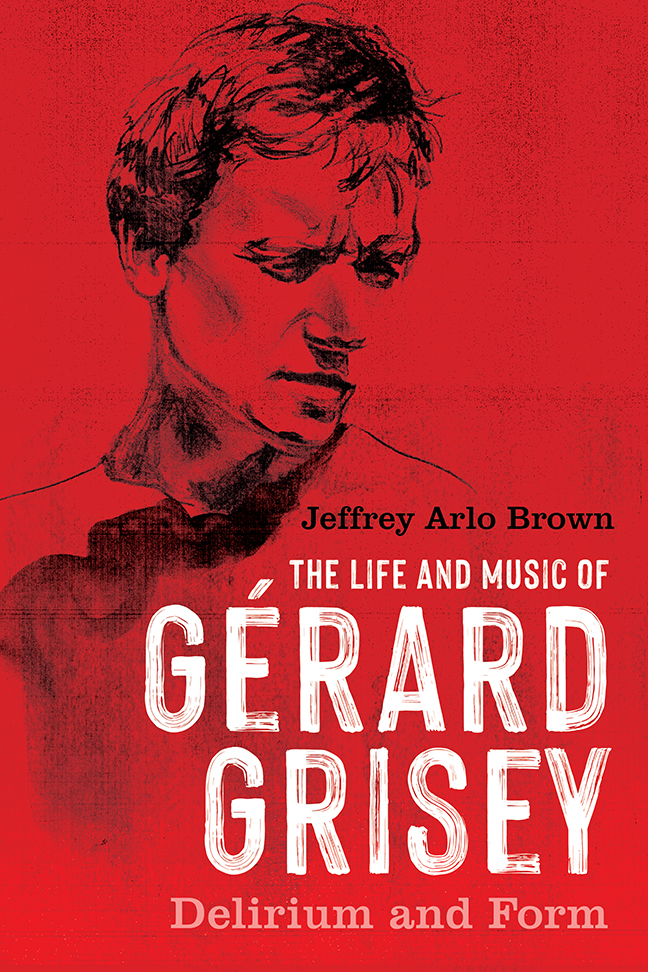Book contents
- Frontmatter
- Contents
- List of Illustrations
- Acknowledgments
- One The Lost Voice (1946–61)
- Two The Carnal Shell (1961–65)
- Three The Rhythm of Love (1965–67)
- Four Exchange Beyond Language (1968–70)
- Five The Silence that Attracts (1970–72)
- Six The Sensual Embrace (1972–74)
- Seven Ultimate Fusion (1974–78)
- Eight Astarte (1978–79)
- Nine Extreme Pleasure, Extreme Pain (1980–82)
- Ten The Grains of Sound (1982–86)
- Eleven Absolute Love (1986–88)
- Twelve Seduced by the Star (1988–91)
- Thirteen Suggestions of the Infinite (1991–96)
- Fourteen Nut (1996–98)
- Fifteen Berceuse
- Appendix: Recordings of Music by Gérard Grisey
- Bibliography
- Index
Six - The Sensual Embrace (1972–74)
Published online by Cambridge University Press: 17 December 2023
- Frontmatter
- Contents
- List of Illustrations
- Acknowledgments
- One The Lost Voice (1946–61)
- Two The Carnal Shell (1961–65)
- Three The Rhythm of Love (1965–67)
- Four Exchange Beyond Language (1968–70)
- Five The Silence that Attracts (1970–72)
- Six The Sensual Embrace (1972–74)
- Seven Ultimate Fusion (1974–78)
- Eight Astarte (1978–79)
- Nine Extreme Pleasure, Extreme Pain (1980–82)
- Ten The Grains of Sound (1982–86)
- Eleven Absolute Love (1986–88)
- Twelve Seduced by the Star (1988–91)
- Thirteen Suggestions of the Infinite (1991–96)
- Fourteen Nut (1996–98)
- Fifteen Berceuse
- Appendix: Recordings of Music by Gérard Grisey
- Bibliography
- Index
Summary
On October 1, 1972, Grisey and Jocelyne arrived at the Villa Médicis in Rome. Located in the center of the city, the gardens alone consist of seven hectares, crowning a stunning sixteenth-century villa. For Grisey, who had already documented his fascination with the art and culture of the Italian Renaissance during his 1969 visit to Siena, it must have been an inspiring setting. Freed from financial worries and teaching, he was able to read, listen, spend time with the other artists at the French and other academies in the city, and compose.
Most importantly, Grisey got to know Tristan Murail. The two young men had been acquaintances, but not more, in Messiaen's class. Their closer encounter in Rome had lasting consequences for both of their musical aesthetics.
Murail was born in Le Havre in 1947. His family background contrasted starkly with Grisey’s: Murail's father was a journalist, poet, and painter, and his mother was a writer (Murail's three siblings also became writers). In 1963, the Murails moved to Paris so that Tristan could prepare appropriately for his baccalauréat. Murail's university education reads like a summary of the most prestigious institutions in Paris: economics at the Sorbonne, Arabic at the École nationale des langues orientales vivantes, political science at the Sciences Po—a sort of finishing school for the country's bureaucratic elite–– and composition in Messiaen's class. In this class, Murail was considered the top student, while, as mentioned, Messiaen kept Grisey at arm's length.
Besides the different worlds from which the two composers originated, they also had divergent natures. “Murail is, at his root, this funny combination of super romantic and complete scientific positivist,” said Joshua Fineberg, the American spectral composer, who was close with both men. “And Grisey was almost the opposite. He had the mystical where Murail was rational, and he was kind of modernist where Murail is romantic.” In their overlapping year at the Villa Médicis, from 1972 to 1973, a friendship began to develop.
One day, Grisey and Murail went for a walk on the grounds. Murail told Grisey that, having experimented with small composer-collective projects, he was planning to create a new group with attached ensemble. This collective became Ensemble L’Itinéraire, which, more than any other institution, helped establish spectral music as a viable aesthetic movement. According to Murail, however, Grisey didn't want to be part of the collective.
- Type
- Chapter
- Information
- The Life and Music of Gérard GriseyDelirium and Form, pp. 92 - 107Publisher: Boydell & BrewerPrint publication year: 2023



